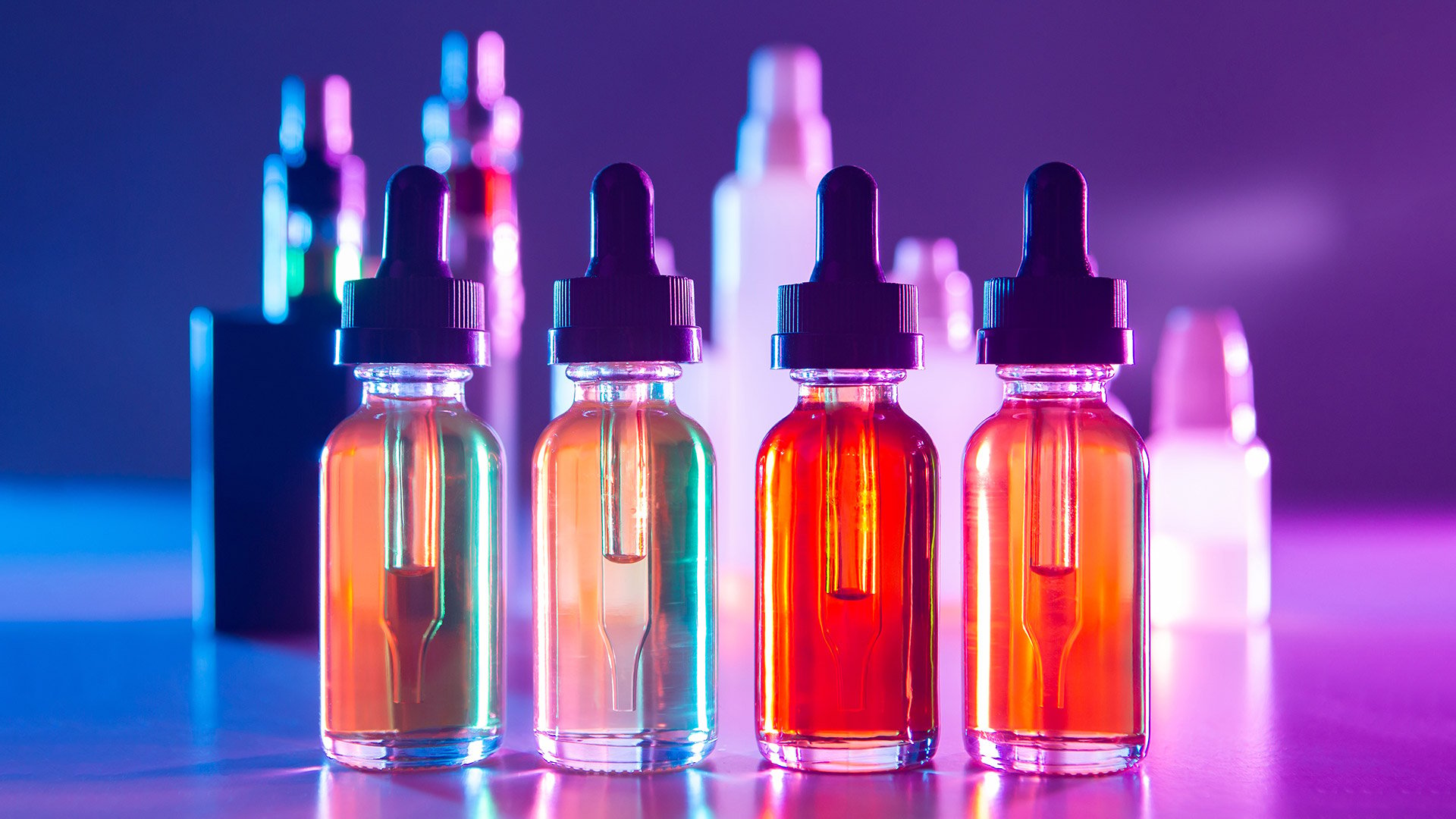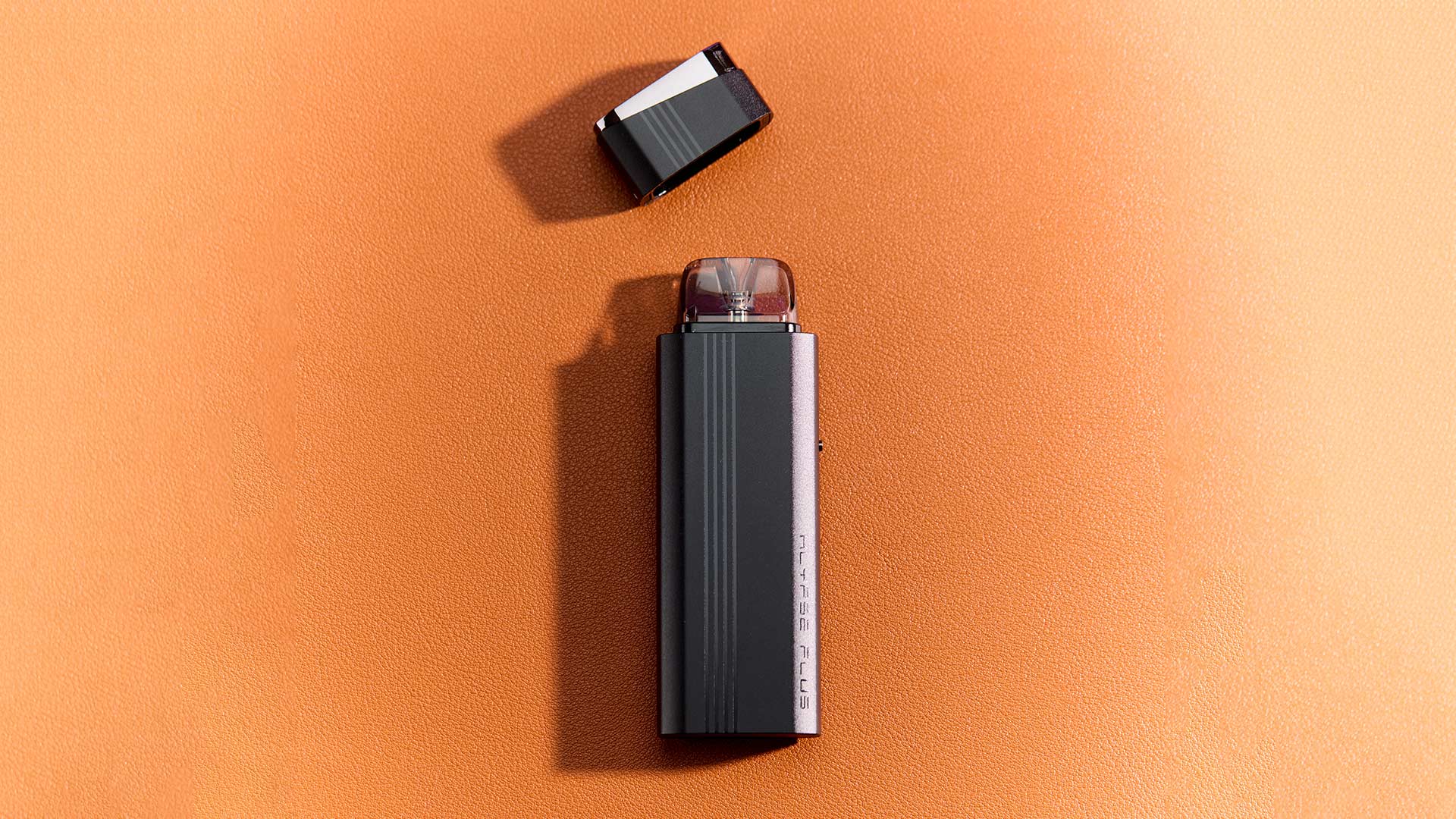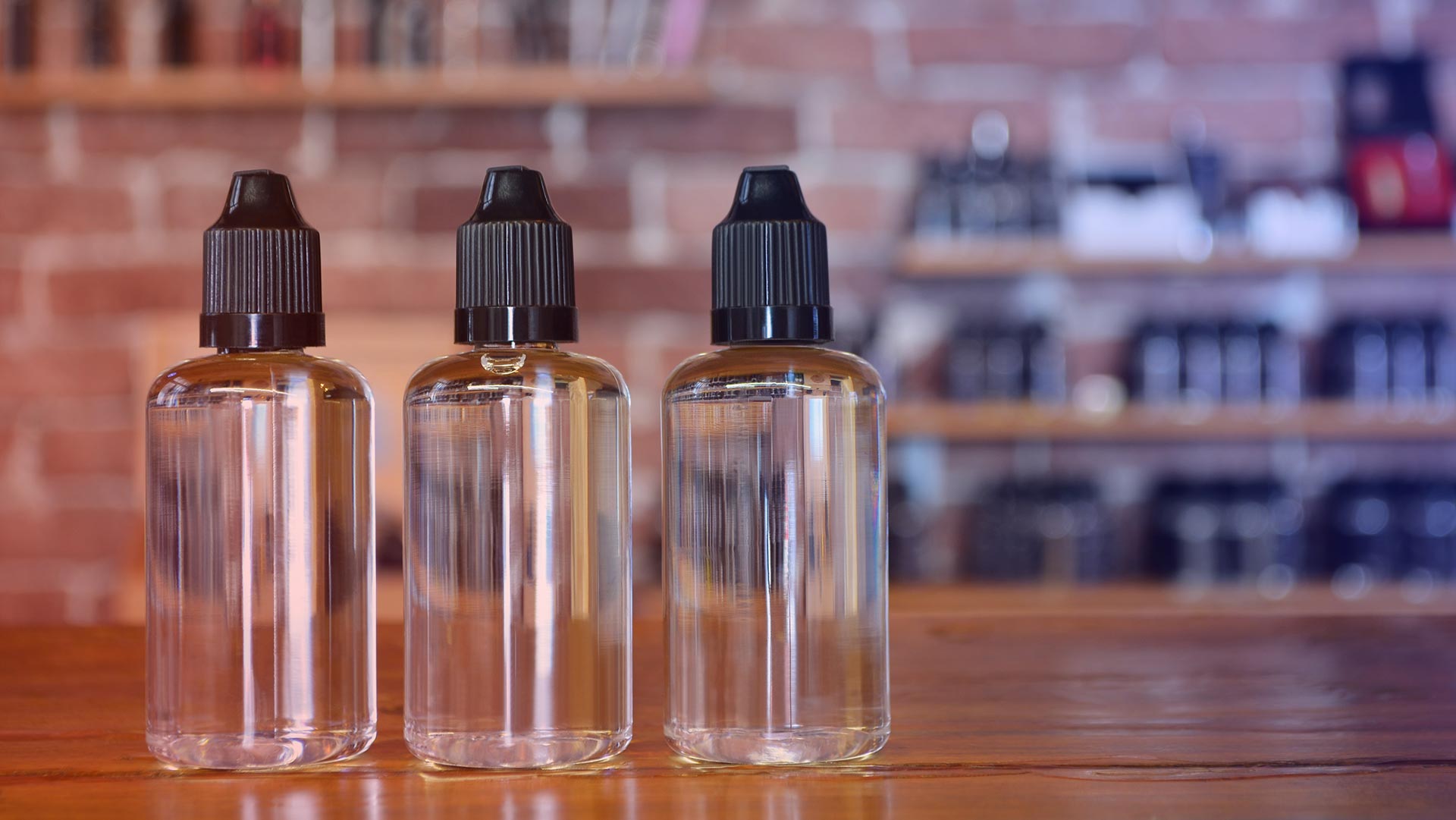When you buy vape juice, it’s likely that the two e-liquid ingredients you think about most are the flavors and the nicotine. What you might not realize, though, is that flavors and nicotine are actually the vast minority of what’s in any bottle of e-liquid. In fact, those two ingredients are about 15 percent of a vape juice’s recipe at the absolute most. So, what are you actually inhaling when you vape? In fact, two base ingredients – propylene glycol (PG) and vegetable glycerin (VG) – comprise the majority of an e-liquid’s contents. When you vape, in other words, what you’re inhaling is mostly PG and VG – so it’s a good idea to know what those two key e-liquid ingredients are and how they affect your vaping experience.
What’s the difference between PG and VG, and how does your vaping experience change when you switch to a vape juice with a different VG/PG ratio? Let’s dig in.
What Is Propylene Glycol (PG)?
Propylene glycol is a synthetic substance that’s slightly viscous and has no color, no scent and almost no taste. It’s one of the most common additives in cosmetics and skincare products, and it is also added to some foods and beverages. PG has been in use for so long that the United States Food and Drug Administration has given it the “generally regarded as safe” (GRAS) classification. That means it’s not known to be harmful in moderate amounts and is approved as an additive in many types of products.
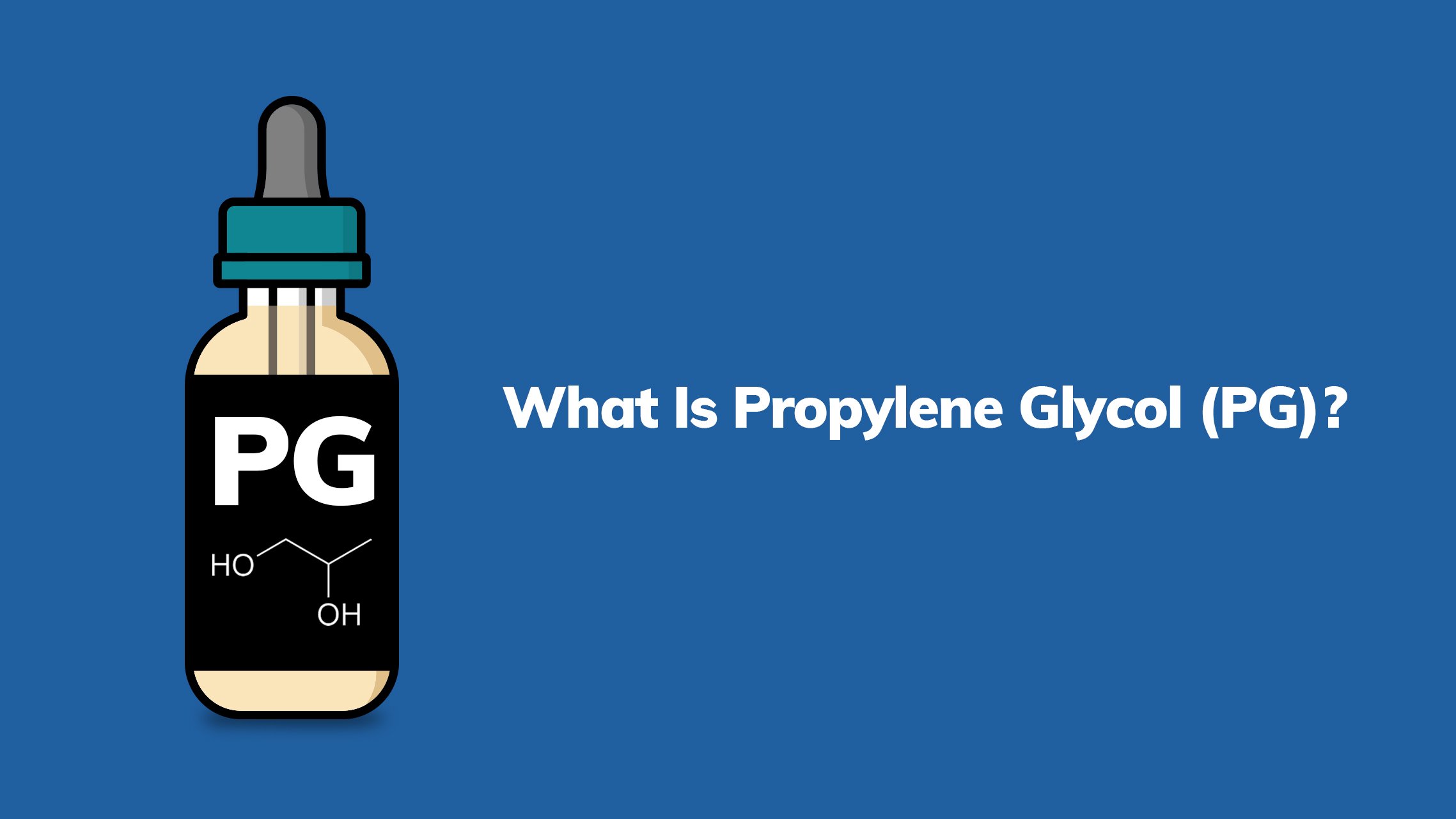
How Is Propylene Glycol Made?
Propylene glycol is produced synthetically in laboratories and may be derived from propylene oxide or obtained as a byproduct of biodiesel production. PG is derived from biodiesel, however, generally isn’t considered food grade and isn’t used for e-liquid.
What Are the Uses of Propylene Glycol?
Propylene glycol has several properties that make it useful as an additive in a wide variety of products.
- It is an emulsifier. Ingredients mixed with propylene glycol tend to stay mixed without separating. PG’s ability to emulsify ingredients makes it useful as an additive in liquid medications and bottled beverages with creamy ingredients. The presence of PG eliminates the need to shake the bottle every time you use those products.
- It attracts and traps moisture. Products that include propylene glycol as an ingredient tend to resist drying out. PG is a common ingredient in lotions and moisturizing cosmetics. It’s also added to some shelf-stable foods to keep them from drying out.
- It is a solvent. Many powders and other compounds will dissolve fully in propylene glycol. PG is an excellent flavor carrier, which is one of the reasons why it’s used in vape juice.
- It inhibits microbial growth. PG is a common ingredient in products intended to kill or inhibit the growth of bacteria, such as air fresheners, disinfectants and deodorants.
As you have probably concluded from reading the above, PG’s properties make it an excellent choice as a base for e-liquid. It keeps the ingredients mixed together, carries flavors well and creates a visible cloud when it’s heated.
What Is Vegetable Glycerin (VG)?
Vegetable glycerin is a viscous liquid that’s slightly thicker than PG. It has no scent, and its flavor is slightly sweet. Glycerin is a natural product that’s created when lye is mixed with oil. It’s possible to extract glycerin from any fat – including animal-based fats. In the vaping industry, we use the term “vegetable glycerin” to signify the fact that e-liquid companies only use glycerin from plant sources.
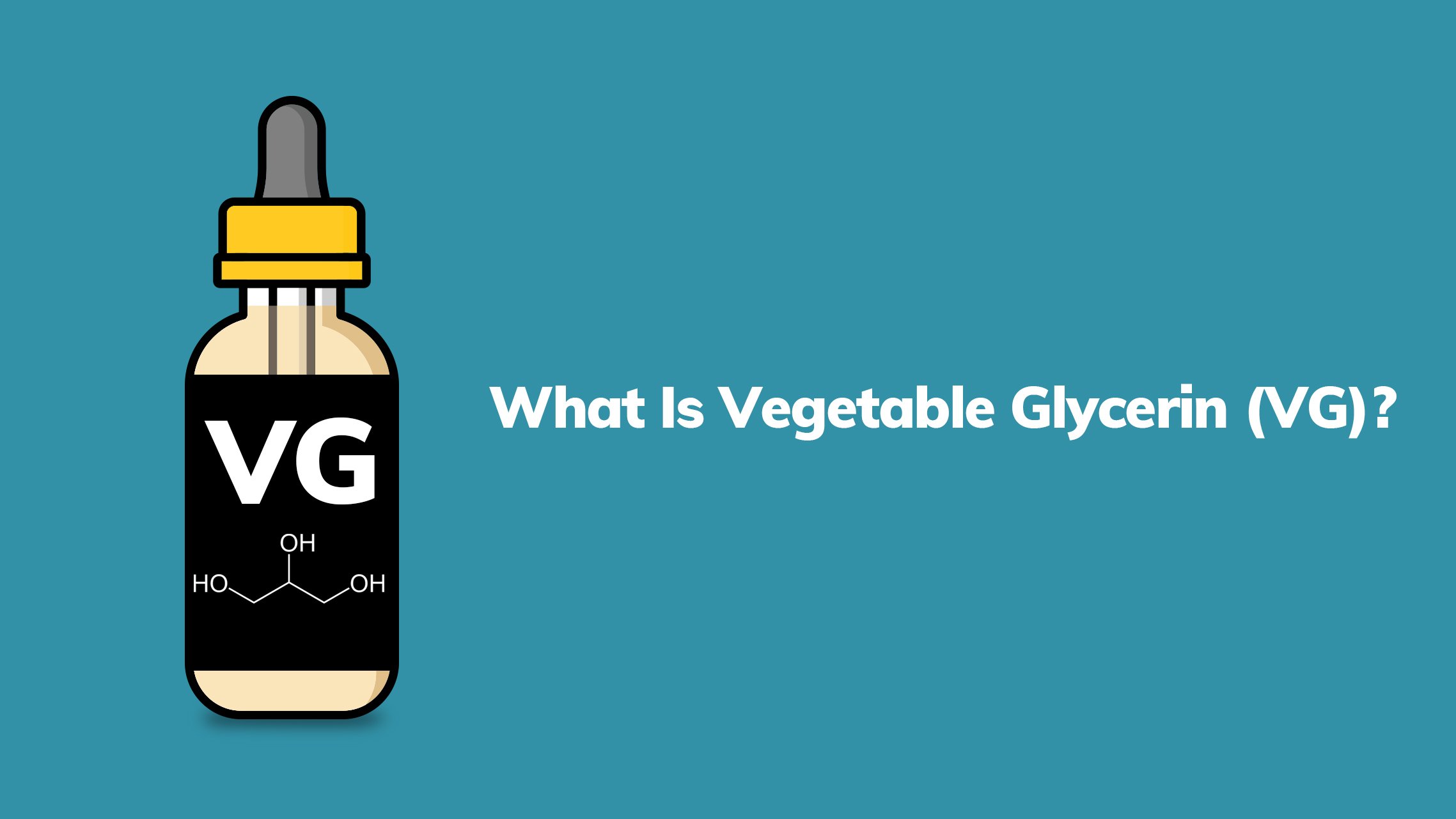
How Is Vegetable Glycerin Made?
Vegetable glycerin is a natural product rather than a synthetic one. It’s a byproduct of the soapmaking process. When you mix lye with fat, the two products are soap and glycerin. Some of the glycerin is added back into the soap as a moisturizing ingredient, and the rest is used for other purposes.
What Are the Uses of Vegetable Glycerin?
VG and PG are both viscous liquids that are similar to alcohol in their molecular composition. For that reason, they have similar properties and are used for similar purposes. Like PG, VG is an effective emulsifier, humectant and solvent. The fact that VG is thicker than PG means that it performs a bit differently when it’s used in e-liquid. We’ll explain that in greater detail next.
Aside from the difference in performance when it’s used in e-liquid, VG differs from PG in two important ways.
- Because a few people are allergic to propylene glycol, VG is a non-allergenic alternative that can be used for many of the same purposes. PG allergies, however, are very rare.
- VG has a sweet flavor. It isn’t a calorie-free sweetener, but it does have a low glycemic index. For that reason, it’s used as an alternative sweetener – usually in combination with other sweeteners – in some foods and beverages.
What Is the VG/PG Ratio of an E-Liquid?
Now that we’ve explained what VG and PG are, let’s learn a bit more about how VG vs. PG compare in the world of vaping. Most e-liquid contains both VG and PG, and it’s the balance of those two ingredients that affect how a vape juice performs. That’s why almost every e-liquid has its VG/PG ratio printed on the bottle. An e-liquid with a high VG/PG ratio contains more VG than PG, and an e-liquid with a low VG/PG ratio contains more PG than VG. E-liquids containing only VG or only PG also exist, but they aren’t common. You can also find e-liquid with a 50/50 VG/PG ratio, which balances the benefits of both liquids.
Let’s conclude the article by learning more about how high-VG vs. high-PG e-liquids compare.
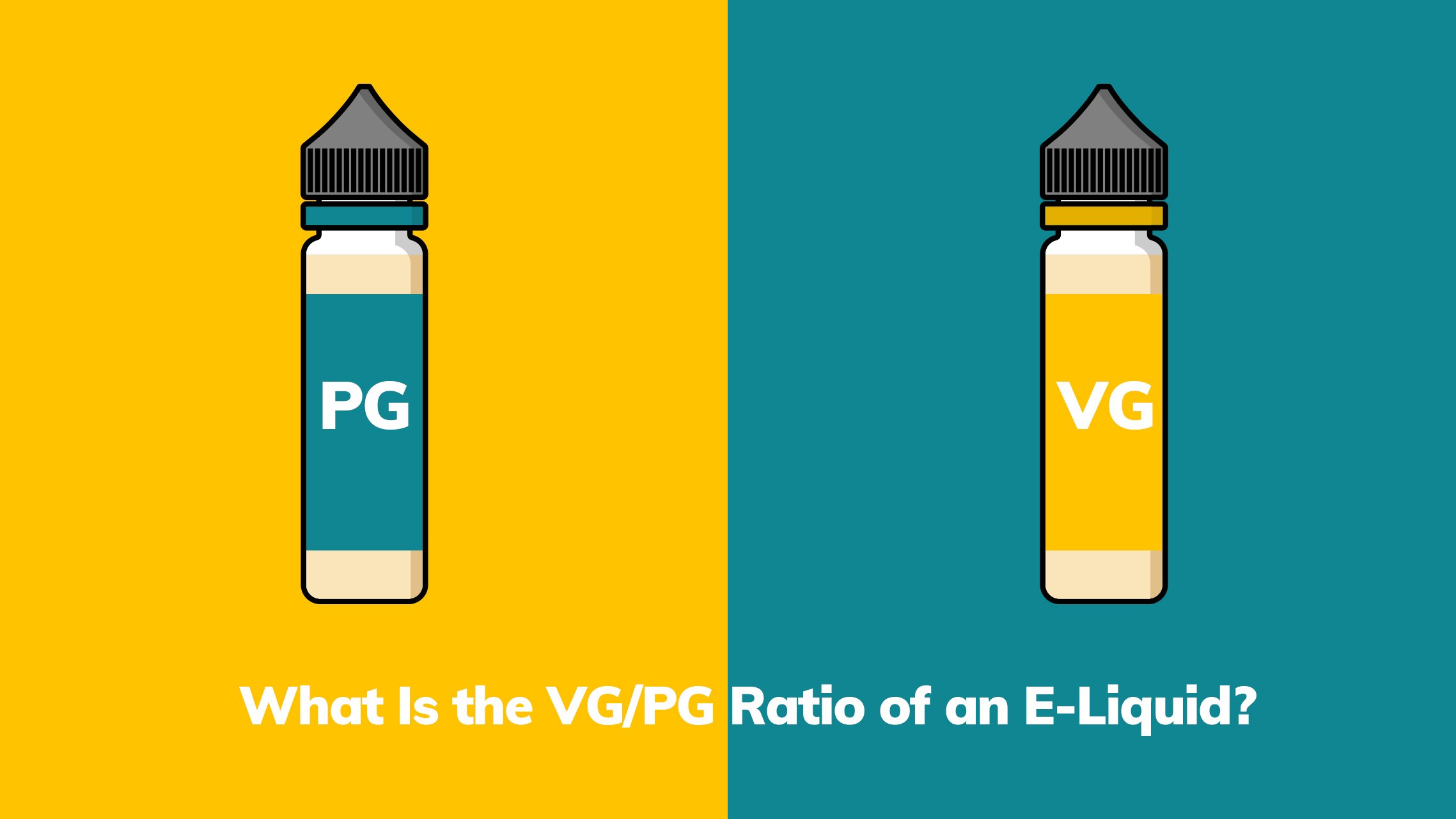
What Are the Benefits and Drawbacks of a High VG/PG Ratio?
High-VG E-Liquid Is Best for Big Vapor Clouds
As we mentioned above, VG is considerably thicker and more viscous than PG. Therefore, the higher an e-liquid’s VG/PG ratio is, the thicker the e-liquid will be. That contributes both to the primary benefit and the primary drawback of high-VG e-liquid. On one hand, the thickness means that you’ll get the biggest and most luxurious vapor clouds from an e-liquid with a high VG/PG ratio. That’s what makes high-VG e-liquids popular among people who use luxury vaping devices designed for serious cloud chasing. With a high-VG e-liquid, you’ll enjoy huge vapor clouds that fill a room and hover in the air for ages. You’ll also enjoy a thick, creamy mouthfeel.
High-VG E-Liquid Is Best for Smoothness and Sweetness
The fact that VG has a sweet flavor means that it tends to enhance e-liquids with sweet flavor profiles. A high-VG blend is always a perfect complement for a dessert, candy or beverage vape juice. Using a high-VG blend for a sweet e-liquid allows it to taste very sweet even if it has no – or very little – added sucralose. Thus, a high-VG blend can make it possible to create a sweet vape juice that’s still very coil friendly. Many people also find that the sweetness of VG helps to mask the sensation of throat hit, thus making a high-VG e-liquid very smooth and easy to inhale.
High-VG E-Liquid Isn’t Always Best for Small Vaping Devices
The thickness of a high-VG e-liquid can also be a drawback if you use an entry-level vaping device such as a very small vape pen starter kit. The smallest vaping devices are designed to give the best performance with e-liquids that aren’t too viscous. If you use a high-VG e-liquid with a very small vaping device, you may experience harsh “dry hits.” With small vaping devices, it’s generally best to use an e-liquid containing at least 50 percent PG.
What Are the Benefits and Drawbacks of a Low VG/PG Ratio?
High-PG E-Liquid Is Best for Flavor Definition and Throat Hit
Because PG is such an effective solvent, it’s also a great flavor carrier. In fact, many of the flavors concentrate used in e-liquid production use PG as a base, which makes them perfect for adding directly to e-liquid. When you use a high-PG e-liquid, you’ll enjoy a clear flavor definition. The sweetness of VG, in comparison, can tend to make subtle flavors difficult to taste. Because PG doesn’t have the sweetness of VG, some people feel that it produces a stronger and more assertive throat hit. For those reasons, you might enjoy a high-VG e-liquid if you prefer complex flavor blends or enjoy savory flavors like tobacco.
High-PG E-Liquid Is Best for the Smallest Vaping Devices
If you use a very small vaping device like an entry-level vape pen or a pod system, you may find that high-PG e-liquid works best with your device because of its low viscosity. In a vaping device designed for maximum convenience and portability, the openings that the e-liquid must travel through to reach the atomizer coil are often very small. The smaller those holes are, the thinner your e-liquid should be in order to avoid dry hits.
High-PG E-Liquid Isn’t the Best Choice for Cloud Chasing
Although the thinness of high-PG e-liquid can be a benefit for those who use very small vaping devices, it can also be a drawback if you use a more powerful vaping device designed for cloud chasing. That’s because a high-PG e-liquid produces smaller, thinner vapor clouds that dissipate from the air quickly. High-PG e-liquid is a perfect choice for discreet vaping, but it’s not the best option if you love big clouds.
Hemok Wang
Hey! Hemok here, a vaping enthusiast with a passion for helping people quit smoking. My uncle was diagnosed with lung cancer a few years ago after smoking for more than 40 years. I do understand that quitting smoking isn't only a physical issue but also a mental one. It's just hard to go "cold turkey". I believe that vaping is one of the best solutions to make the switch only if you do it in the right way, and that's why I am here to share :)

